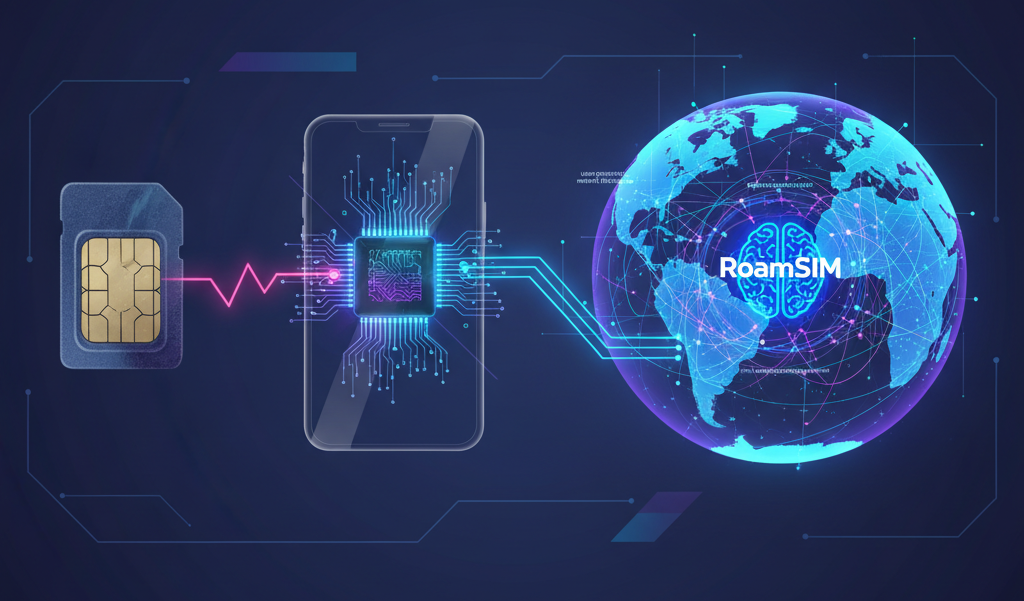
From SIM to eSIM to RoamSIM : Why Customer Experience Must Lead the Next Telecom Revolution
Introduction: Why SIM Cards Are Stuck in the Past
For over 34 years, the humble SIM card has defined the relationship between people and mobile networks. Born in the 1990s, SIMs were designed for a different era—when switching operators was rare, global connectivity was a dream, and user data had little value beyond billing. Fast forward to 2025: the mobile industry is worth $1.5 trillion annually, 5G rollouts still leave billions without reliable service, and users remain locked into outdated models.
At Roam, we believe customer experience must come first. Technology should serve the user, not the other way around. That’s why we see the evolution of eSIM standards as both a technical breakthrough and a chance to reimagine how connectivity is owned, managed, and rewarded.

The Evolution of eSIM Standards
1. M2M eSIM (2013) – Machine-first, not human-first
The first GSMA eSIM standards (SGP.01/02) were designed for machines, not people. Car manufacturers and IoT companies could push operator profiles remotely. But the system was heavy, slow, and riddled with vendor lock-in—great for logistics, poor for scale and user freedom.
2. Consumer eSIM (2016/2017) – Users finally in control
With SGP.21/22, the consumer eSIM arrived in smartphones and wearables. Instead of carriers pushing, users could pull new profiles—by scanning a QR code or activating via an app. Suddenly, global travelers could buy a local data plan in seconds. This model unlocked interoperability and helped eSIM scale across iPhones, Pixels, and wearables.
But a gap remained: no automated way to swap profiles remotely. Users still had to manage everything manually.
3. IoT eSIM (2023) – Zero-touch, everywhere, always
The newest standard (SGP.31/32) is a second-generation IoT model that combines the best of both worlds. It introduces:
- The eSIM IoT Remote Manager (eIM) – orchestrating profile changes remotely
- The IoT Profile Assistant (IPA) – enabling even constrained devices to update profiles asynchronously
This means true zero-touch connectivity: devices (or users) can be shipped globally, and provisioned with the right profile on demand. No SIM swaps. No guesswork. No downtime.
Why This Matters for Customers
For decades, telecom innovation has been network-first and user-last. Operators invested billions in new standards (2G→5G) but left the SIM card relationship unchanged. The result? Users still:
- Struggle with roaming costs
- Get stuck with poor coverage in many regions
- Gain nothing from the valuable data their phones generate
eSIM—and specifically the IoT-focused SGP.32—flips this model. It opens the door to:
- Seamless switching across operators based on real-time performance
- A “build once, ship anywhere” global standard for devices
- Security, flexibility, and freedom from vendor lock-in
Roam’s Vision: The Last eSIM You’ll Ever Need
At Roam.Network, we’re not just adopting eSIM—we’re redefining it.
- RoamApp already collects billions of verified mobile signal measurements, building a living Digital Twin of the world’s networks.
- RoamAnalytics turns this into AI-powered intelligence, showing exactly where networks work (and fail).
- RoamSIM (planned) will be the last eSIM you’ll ever need: seamlessly selecting the best network for you, anywhere in the world. No QR codes, no guessing. Just better connectivity, always.
And unlike legacy telecom, your data finally works for you. With our planned $ROAM token, users are rewarded for their contributions—aligning incentives between individuals and the networks they power.
Conclusion: Experience First, Technology Second
The SIM card was designed for a world where users didn’t matter. eSIM and IoT eSIM were designed for flexibility. At Roam, we’re designing for empowerment.
The future of connectivity isn’t just about faster speeds or new standards—it’s about putting experience, transparency, and value ownership back in the hands of the user.
Roam.Network is building exactly that. The last eSIM you’ll ever need.